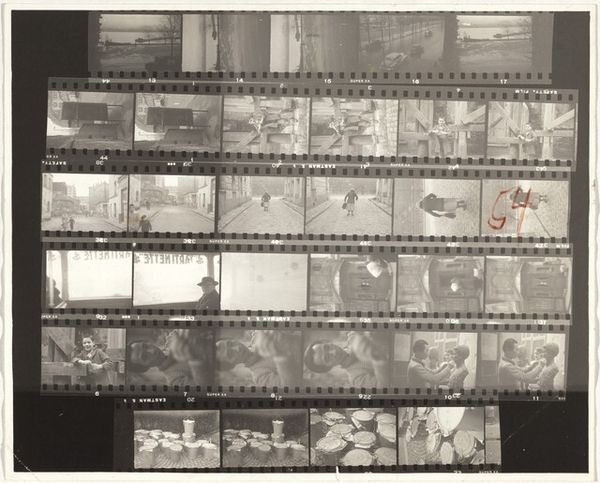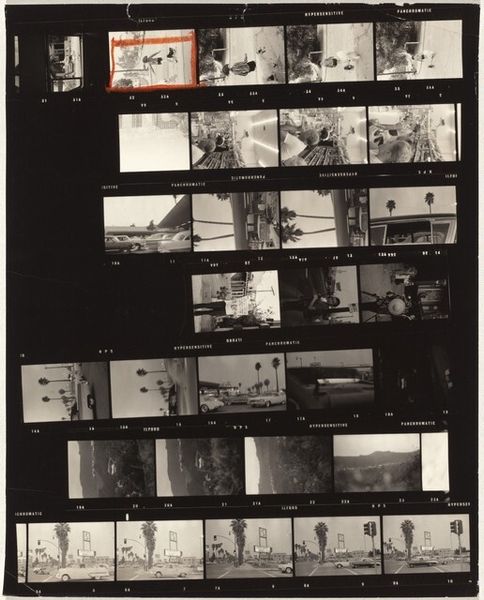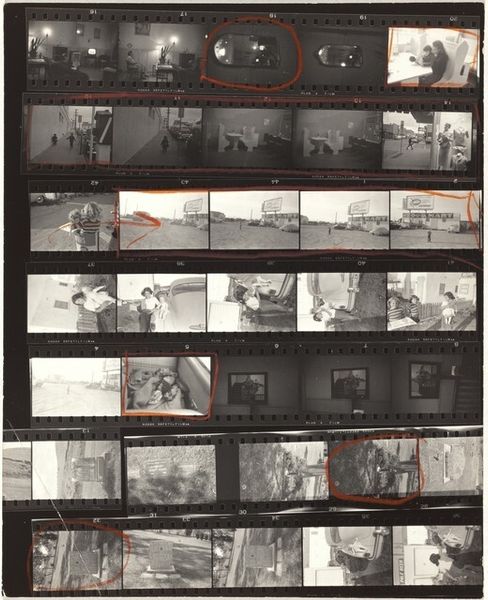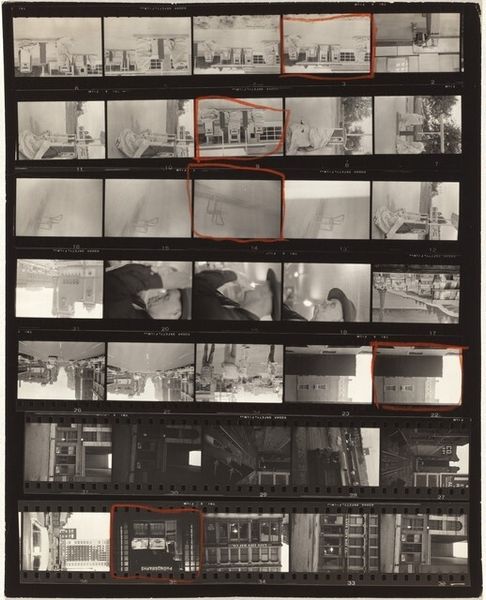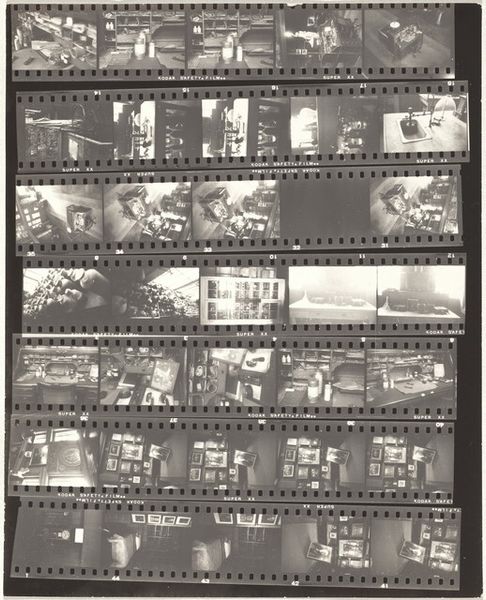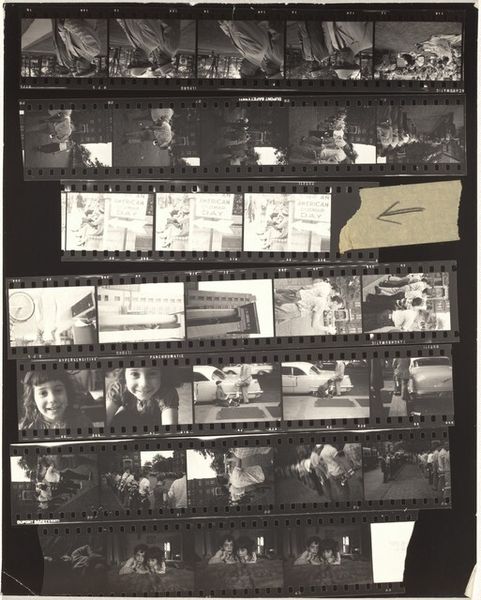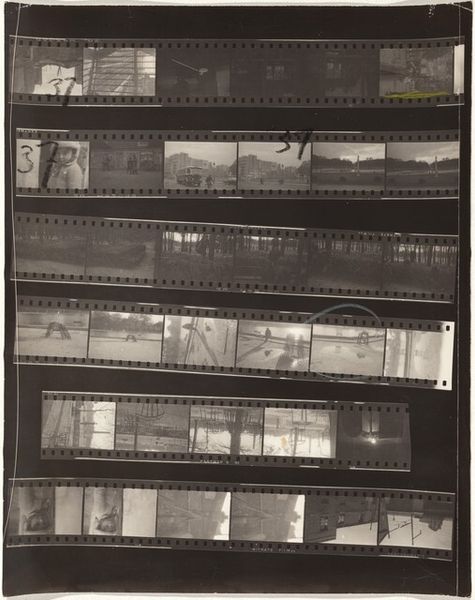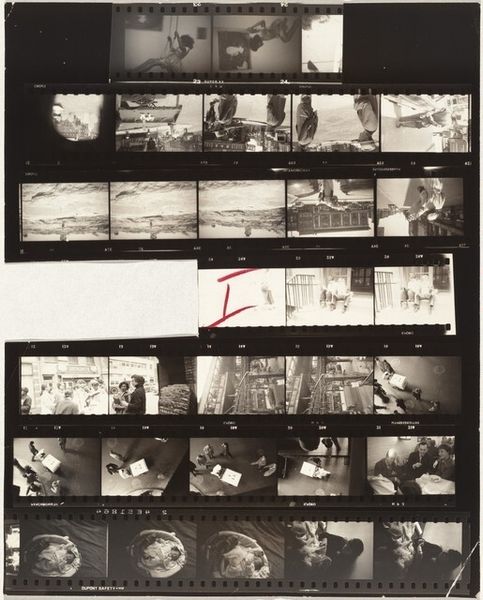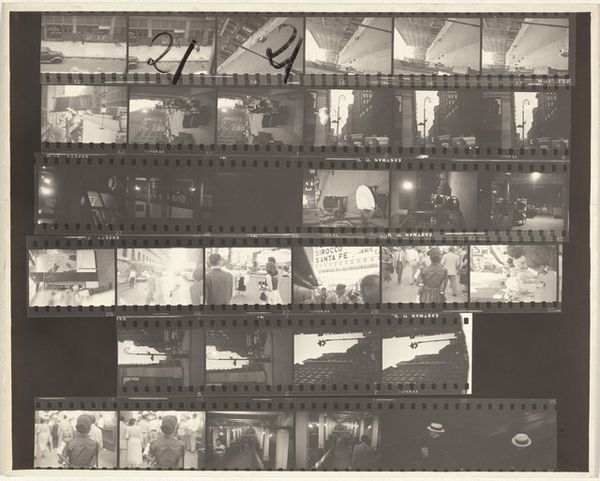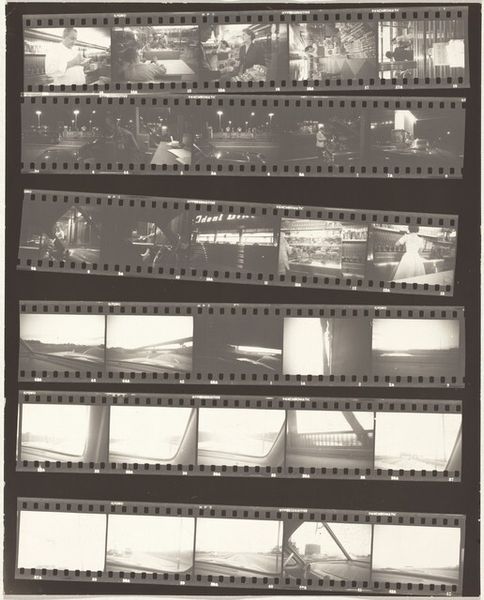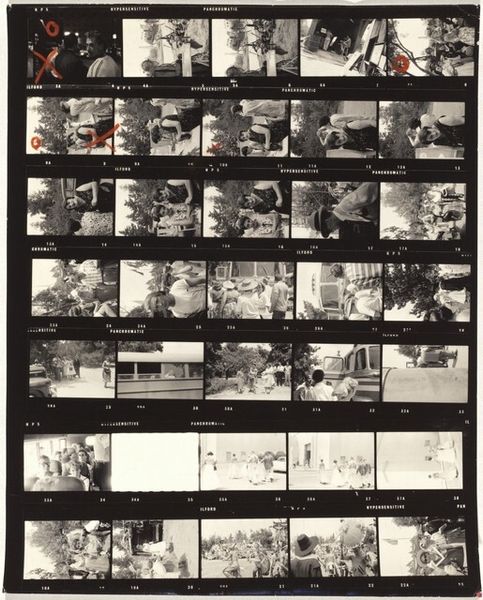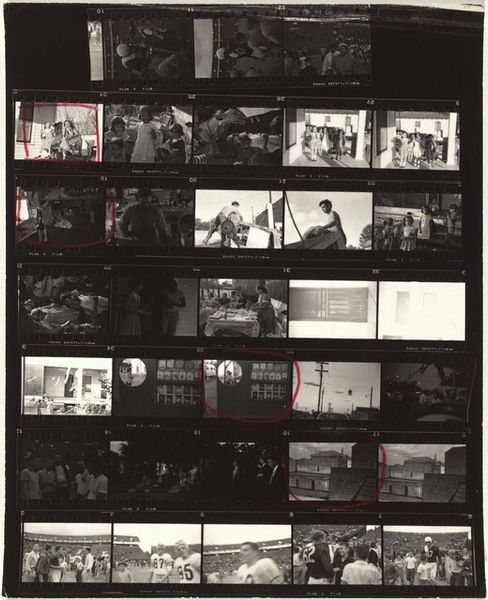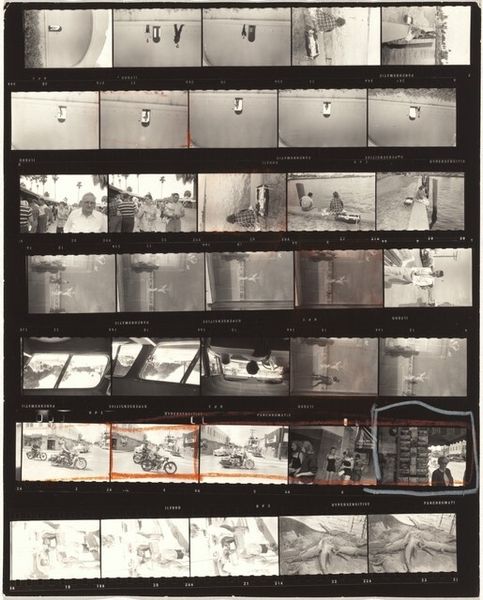
Dimensions: overall: 25.2 x 20.2 cm (9 15/16 x 7 15/16 in.)
Copyright: National Gallery of Art: CC0 1.0
Curator: Right in front of us we have "Hollywood 27," a 1958 contact print by Robert Frank. What’s your initial reaction to this intriguing piece? Editor: It looks like a collection of forgotten memories, a series of fleeting moments caught in the city’s hazy dreamscape. I’m instantly drawn to the raw, almost scrapbook-like quality, like evidence. Curator: Scrapbook is right. Let's delve into the making. It’s a contact print, a direct impression from the negatives, presenting all the frames from the film roll at once, unedited, uncropped. The tangible artifact and evidence, really, of photography's intrinsic connection to industrial processes, commerce and consumer culture. This technique really emphasizes the material presence of the film itself. It makes one aware that the photographs and photographers are only part of a network of other industrial forces. Editor: It feels profoundly honest, even vulnerable. This uncut form breaks from idealized imagery by offering everything—successes, mistakes. What appears incomplete or rough hewn resonates. Like a private collection made public. Curator: That's exactly it. There's a whole network here. Frank took his camera into American cities—it was never just *him*. His process exposed the underbelly, challenging the idealized America prevalent in the media at the time. A far cry from glamour! Editor: And to think, so much of art history elevates singular authorship and a finished perfect piece. Frank’s emphasis on photographic process brings light to how interconnected image making truly is, by using Kodak film and contact paper and highlighting all the misfires, et cetera, he implies these photographs are collective rather than individual expressions. Curator: Yes, these strips emphasize a fragmented viewpoint, like fleeting perceptions, offering insight to the way memories exist not as neat stories but like layered glimpses. Editor: In Frank’s hands, a common tool such as Kodak film becomes a statement on societal processes and structures! Seeing “Hollywood 27”, through his lens really pushes past any ideal notions to ask us all, how many hands and products were actually used? Curator: Absolutely. Seeing it all laid bare truly allows a deeper understanding of image creation in the mid-20th century and maybe today.
Comments
No comments
Be the first to comment and join the conversation on the ultimate creative platform.
